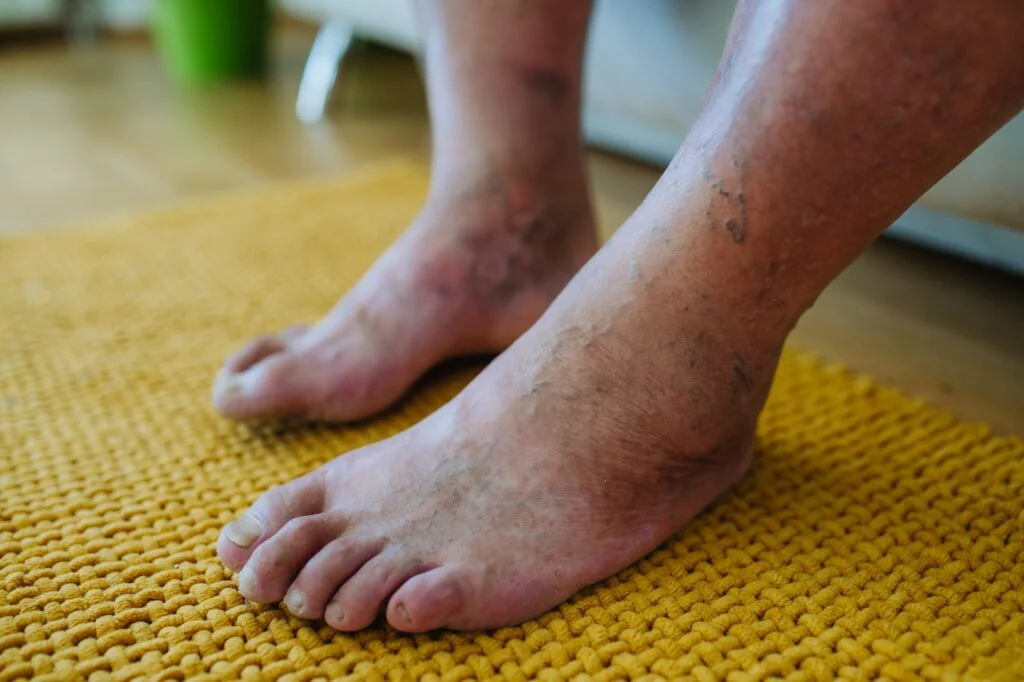Table of Contents
What Are Pressure Ulcers?
Pressure ulcers are sores that occur when pressure cuts off the blood supply to the skin. Stress caused by the body’s weight and the impact of striking the ground place the ball of the foot, the big toe, and the heel at the greatest risk. Left untreated, an ulcer may allow infection to enter your body. If infection reaches the bloodstream or bone, your life or limb may be at risk. But with your doctor’s help, your health can be protected. Pressure ulcers can be controlled and even prevented.
How Do Pressure Ulcers Form?
Force or friction against the bottom of your foot causes the skin to thicken, forming a callus. If the skin keeps thickening, the callus presses up into the foot. This kills healthy tissue and causes pain. Unfortunately, you may not notice the pain if you have neuropathy, a health problem that limits how much feeling you have in your feet. As healthy skin dies, an ulcer forms. Ulcers may progress from hot spots to infected wounds very quickly. A callus pressing into the foot may kill healthy tissue and cause an ulcer.
Hot Spots
Red “hot” spots on the skin are signs of pressure or friction. They are a warning that you need to take care of your feet. If pressure is not relieved, a hot spot is likely to blister. Left untreated, a blister can turn into an open wound or a corn (thickened skin on top of the foot) or callus.
Ulcers
If a corn or callus presses into the foot, it destroys inner layers of skin and fat. Cracks and sores may form. These open wounds are ulcers. They provide a way for infection to enter the body. In some cases, dead skin (such as a corn or callus) may cover an open wound, making it harder to see.
Infected Ulcers
If bacteria enter the ulcer, infection sets in. This causes more healthy tissue to die. The infected ulcer may begin to drain. The discharge may be white, yellow, or greenish. Some infected ulcers bleed or have a bad odor. If you develop an infected ulcer, call your doctor right away.
Your Physical Exam
During your foot exam, your doctor will ask about your health. Do you have poor circulation, diabetes, or kidney problems? Your doctor will check your feet for hot spots and thickened skin. He or she may also look for any bone or joint problems. Your ability to feel sensation in your feet also may be checked.
Testing
Blood flow and nerve sensation in your feet may be tested if you have a chronic health problem, such as diabetes. If you have a deep pressure ulcer, an x-ray or bone scan may be done to check for signs of bone infection.
A Doctor's Treatment
With your doctor’s care, hot spots, small cracks, or sores can be treated before they get infected. If infection is already present, medications will probably be prescribed. Surgery may also be needed if the infection has spread.
Cleaning the Ulcer
To assist healing, thickened skin around the ulcer may be cleaned away. Medicated ointment or cream may be applied to prevent infection. Sometimes a special dressing isused to help keep the wound dry.
Reducing Force
To take pressure off hot spots and ulcers, your doctor may prescribe orthoses. These custom-made shoe inserts absorb or divert pressure from problem areas. Special shoes or temporary casts may also be used.
Using Antibiotics
To control or prevent infection, your doctor may prescribe antibiotics. Take them all, and take them as directed. If you stop using an antibiotic too soon, the infection may come back.
If Surgery Is Needed
Surgery may be needed if infection enters deep tissues or bone. In such cases, your doctor cleans away the infection while removing as little tissue or bone as possible. You may also be given intravenous (IV) antibiotics to fight the infection.
Preventing Ulcers
By taking care of yourself, you may be able to prevent pressure ulcers. At the very least, you can reduce your risk of getting one. Try to check your feet daily and improve your overall health. Also, protect your feet by wearing shoes and socks that don’t rub.
Checking Your Feet
Use a mirror to look at the bottom of your feet each day. By doing so, you can catch small skin changes before they turn into ulcers. Call your doctor if you notice any hot spots, red streaks, swelling, or any cracks or sores. Also, check the soles and insides of your shoes before putting them on. Remove any objects, such as pebbles.
Improving Your Overall Health
Do your best to control health problems that may affect your feet, such as diabetes and kidney disease. Eat right and exercise. If you are given medications, take them as directed. If you smoke, stop. Smoking reduces blood flow and slows healing. Limiting alcohol intake may also be helpful.



